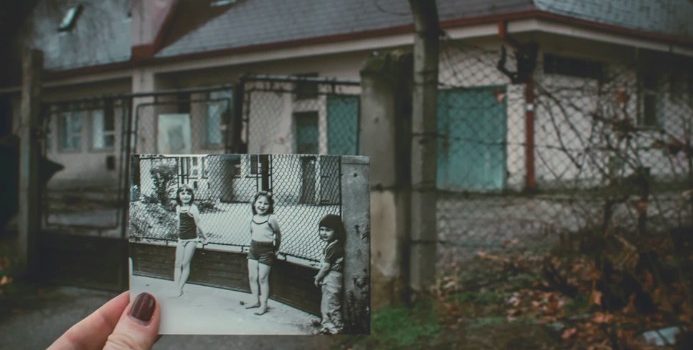

This article is an excerpt from the Shortform book guide to "If You Tell" by Gregg Olsen. Shortform has the world's best summaries and analyses of books you should be reading.
Like this article? Sign up for a free trial here.
How does If You Tell explain Shelly Knotek’s abusive behavior? What was Knotek like as a child?
In Gregg Olsen’s If You Tell, Shelly Knotek’s childhood is presented as a possible explanation for why she turned out to be a horrific person. Even her three marriages are just the beginning of what she would put her daughters and other people through in adulthood.
Let’s look at how Knotek’s childhood and marriages show early signs of her future crimes.
Shelly Knotek’s Childhood: Early Warning Signs
According to If You Tell, Shelly Knotek was born as Michelle Watson to Sharon and Les Watson in 1954. She was raised primarily by her father and her stepmother Lara after age six. Prior to that, she lived with her mother Sharon, whom Les described as an alcoholic who was unable to raise kids. Little is known about Sharon’s relationship with Shelly, but Sharon cut off contact after bringing Shelly to Les’s, and when Shelly was later informed of her mother’s death, she barely reacted.
Shelly’s grandma Anna, whom she often went to see after school, was known for being cruel and demanding. She had two employees of her nursing home staying with her, and she treated them like slaves and abused them when they didn’t work quickly enough. According to Lara, she took joy in others’ suffering. She wouldn’t allow her mild-mannered husband George to sleep in the house, forcing him to sleep in a shed outside instead. Shelly was Anna’s favorite grandchild, though once in a while Shelly became the victim of Anna’s anger. However, most of the time Shelly was by Anna’s side watching the way she treated people—and learning.
As a child, Shelly was impossible to please. She threw tantrums, lied, and started fights to get her way. She resented seeing other people receive attention and went to extreme measures to get attention for herself. These measures included lying, stealing, and even such behaviors as putting broken glass into people’s shoes. She also falsely accused her father of raping her at 15, which dealt a crushing blow to an astonished Les and greatly damaged his reputation. She never showed remorse for her actions.
| Possible Indications of a Personality Disorder While it’s not the intention of this guide to attempt to diagnose Shelly Knotek, it may be noted that much of her behavior resembles the symptoms of certain personality disorders that could provide insight into her actions as an adult. Specifically, many of her behaviors are characteristic of antisocial personality disorder—often referred to as psychopathy. Antisocial personality disorder (ASPD) is a complex mental disorder that is characterized by a persistent disregard for the rights of others, a lack of empathy or remorse, and a tendency toward impulsive and irresponsible behavior like lying and stealing. While the terms are often used interchangeably, not all psychopaths have ASPD and vice versa. The causes of ASPD and psychopathy are unknown, but it’s believed that they’re the result of a combination of genetics and environment. Anna’s similar traits may indicate a genetic predisposition for Shelly, and observing Anna’s behavior may have shaped some of Shelly’s behaviors as an adult. Research into child behavior suggests that when children observe adults engaging in aggressive behaviors, they are more likely to mimic—and expand upon—those behaviors. Additionally, it’s possible that a lack of connection with her mother Sharon could have contributed to her later abusive behaviors. Psychologist John Bowlby theorized that attachment issues in early childhood, and specifically a lack of attachment to a child’s mother, could result in behavioral and cognitive issues and, in rare cases, psychopathy. It should also be noted that, while diagnosis is based largely on behavior, not all people with ASPD or psychopathy engage in criminal or abusive behavior. The conditions also exist on a spectrum, so symptoms may be more severe in some people than in others. The disorders underlying ASPD and psychopathy can’t be cured, but people with these conditions are capable of changing their behavior and learning to relate better to others. Research suggests that cognitive behavioral therapy can be an effective treatment for symptoms and may improve social functioning. |
Marriages and Children
Shelly was married three times and had a daughter with each husband.
Husband Randy and Daughter Nikki
At 19, explains Olsen, Shelly married her high school sweetheart Randy Rivardo. They had Nikki in February 1975. Shelly was extremely persuasive and charismatic, and she used these traits to get what she wanted no matter what. She spent money they didn’t have, always convincing people to let her leave unpaid tabs even after Randy told them not to let her do so. After financial troubles and marital problems—including Shelly locking Randy out of the house regularly—Randy filed for divorce and left Shelly.
(Shortform note: Charisma and the ability to influence others are often present in people with ASPD and psychopaths and can help them get away with harmful behavior. Shelly’s tendency to lock her husband out of the house also echoes Anna’s tendency to do the same to her husband.)
Husband Danny and Daughter Sami
Next, Shelly married Danny Long. They had Sami in August 1978. Nikki viewed Danny as her father and loved him, but Danny and Shelly fought frequently. When Danny would leave the house in a rage, Shelly would put the girls in the car, and they would search for him. She was a hunter, according to her family. If anyone ever tried to escape from her, she tracked them down and brought them back. After five years of marriage, Shelly divorced Danny.
(Shortform note: Even though Shelly always tracked Danny down when he left the house, she was the one who filed for divorce. This may have been because of his tendency to fight back, which made it harder for Shelly to control him. Many abusers try to assert coercive control over their victims, and her inability to do this with Danny may have made her seek out a different victim.)
Husband Dave and Daughter Tori
Next, Shelly married Dave Knotek, whom Olsen described as mild-mannered, and they had Tori in June 1989. Shelly needed someone she could manipulate, and Dave fell in love with her and her kids. Shelly and her daughters moved in with him in Raymond, Washington. Shelly lied and told Dave she had cancer, a ruse she kept up for years. Dave worried about who would take care of the girls when Shelly died, and this was part of the reason he stayed with her.
(Shortform note: It’s not uncommon for abusers to lie about illnesses in order to control their victims and to get attention. The tendency to lie about major illness can also be a sign of factitious disorder, a type of mental disorder that often co-occurs with personality disorders.)
Shelly began verbally abusing Dave, saying he wasn’t working hard enough to take care of the family. She also physically abused him. Dave submitted to the abuse and never fought back, believing that men shouldn’t hit women, even in retaliation. Shelly established a cycle of abuse followed by short periods of doting affection. She isolated Dave from his family so he would have nowhere to go if he ever decided to leave her. The marriage to Shelly quickly broke him. Shelly used these tactics again on all her other victims.
(Shortform note: The process of abuse that Shelly demonstrated with Dave and her later victims is known as grooming. Grooming involves a series of steps that include gaining the victim’s trust, isolating them from their loved ones, and finding ways to keep the victim dependent on the groomer through such means as emotional abuse, degrading the victim’s self-esteem, gradually normalizing abnormal behaviors, and at other times, showering their victims with affection.)

———End of Preview———
Like what you just read? Read the rest of the world's best book summary and analysis of Gregg Olsen's "If You Tell" at Shortform.
Here's what you'll find in our full If You Tell summary:
- The true story about abusers and murderers Shelly and Dave Knotek
- The events leading up to Shelly and Dave's arrests and convictions
- A look into the psychology of abuse and psychopathy






